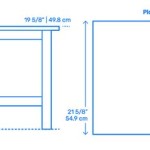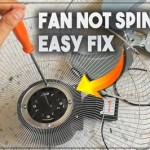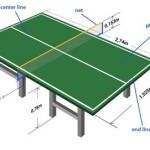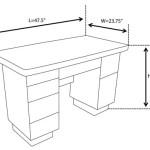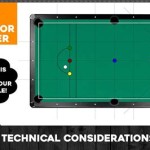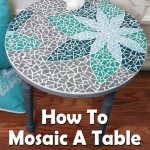Sandbox Table With Cover: A Comprehensive Guide
A sandbox table with a cover is a popular outdoor play fixture for children, offering a designated space for creative and sensory exploration. These tables typically consist of a shallow basin designed to hold sand or other materials, often elevated on legs or a frame to bring the play surface to a more accessible height for young users. The cover is a crucial component, protecting the sand from the elements and unwanted debris, as well as preventing neighborhood animals from using the sand as a litter box. The combination of a contained play area and a protective cover makes these tables a practical and hygienic choice for families and educational settings.
Sandbox tables with covers are available in a wide range of sizes, shapes, and materials. Common materials include wood, plastic, and metal, each offering different advantages in terms of durability, aesthetics, and cost. The design of the cover can also vary significantly, ranging from simple flat lids to more elaborate hinged or folding designs. Regardless of the specific features, the fundamental purpose remains the same: to provide a safe, clean, and easily accessible space for children to engage in sand play.
The selection of a suitable sandbox table with a cover requires careful consideration of several factors, including the age and number of children who will be using it, the available space, the desired level of durability, and the intended budget. Understanding the different types of tables and cover designs, as well as the benefits and drawbacks of each material, is essential for making an informed purchase. Furthermore, proper maintenance and care are crucial for extending the lifespan of the sandbox table and ensuring the health and safety of its users.
Benefits of Using a Sandbox Table With Cover
Sandbox tables with covers offer numerous advantages for both children and their caregivers. These advantages extend beyond simple entertainment and contribute to developmental growth, convenience, and hygiene.
Firstly, sand play is a highly beneficial activity for children, fostering creativity, imagination, and sensory development. Building sandcastles, digging tunnels, and creating landscapes encourage imaginative play and storytelling. The tactile experience of manipulating sand strengthens fine motor skills and hand-eye coordination. Furthermore, group sand play promotes social interaction, cooperation, and communication skills. A sandbox table provides a designated space for these activities, encouraging children to engage in unstructured play and explore their creativity.
Secondly, the elevated design of a sandbox table, as opposed to a ground-level sandbox, offers several ergonomic benefits. The raised height reduces the need for children to bend over or sit directly on the ground, minimizing strain on their backs and knees. This is particularly beneficial for younger children or those with physical limitations. Furthermore, the elevated design helps to keep the sand cleaner by reducing the amount of dirt and debris that can be tracked in from the surrounding environment.
Thirdly, the cover is a critical component of a sandbox table, providing essential protection and hygiene. The cover prevents rainwater, leaves, and other debris from contaminating the sand. It also helps to keep the sand dry, preventing mold and mildew growth. Perhaps most importantly, the cover prevents animals from using the sandbox as a litter box, safeguarding children's health and preventing the spread of disease. The cover also acts as a safety measure, preventing unsupervised young children from accessing the sand without adult supervision.
Types of Sandbox Tables and Covers
The market offers a diverse range of sandbox tables with covers, each with its own unique features and characteristics. These tables can be broadly categorized based on their shape, size, material, and cover design.
Based on shape, sandbox tables are commonly available in square, rectangular, round, or hexagonal designs. Square and rectangular tables offer ample space for multiple children to play and are often preferred for their simple and practical design. Round and hexagonal tables can be more visually appealing and may be better suited for smaller spaces. The choice of shape depends largely on personal preference and the specific spatial constraints of the play area.
In terms of size, sandbox tables range from small, compact models suitable for individual use to large, expansive designs that can accommodate multiple children. The appropriate size depends on the number of children who will be using the table and the available space. It is important to consider the footprint of the table, as well as the surrounding area needed for children to move around comfortably. A larger table may be more suitable for families with multiple children or for use in daycare settings.
The materials used to construct sandbox tables vary widely, with wood, plastic, and metal being the most common options. Wooden sandbox tables offer a natural, aesthetically pleasing look and are often prized for their durability and sturdiness. However, wood requires regular maintenance, such as staining or sealing, to prevent rot and decay. Plastic sandbox tables are lightweight, weather-resistant, and easy to clean. They are also typically less expensive than wooden tables. However, plastic can be prone to cracking or fading over time. Metal sandbox tables are extremely durable and weather-resistant, making them a good choice for outdoor environments. However, metal can become hot to the touch in direct sunlight and may require special coatings to prevent rust. The cover material often mirrors the table's primary construction material, be it wood, plastic, or a treated canvas stretched over a frame.
Cover designs vary considerably, ranging from simple flat lids to more elaborate hinged or folding designs. Flat lids are the most basic type of cover and are typically secured with latches or clips. Hinged covers are attached to the table with hinges, allowing them to be easily opened and closed. Folding covers consist of multiple panels that fold up when the sandbox is in use and fold down to cover the sand when it is not. Some covers may also incorporate additional features, such as integrated benches or storage compartments. The complexity and functionality of the cover directly impacts the convenience and ease of use of the sandbox table.
Maintaining a Sandbox Table With Cover
Proper maintenance is essential for extending the lifespan of a sandbox table with a cover and ensuring the health and safety of its users. Regular cleaning, inspection, and preventative measures are crucial for keeping the sand clean and free from harmful contaminants.
Regular cleaning is perhaps the most important aspect of sandbox table maintenance. The sand should be raked or sifted regularly to remove any visible debris, such as leaves, twigs, or insects. A sand sieve can be used to remove smaller particles and maintain the overall cleanliness of the sand. The sandbox table itself should also be cleaned periodically with soap and water to remove any dirt or grime. Avoid using harsh chemicals or abrasive cleaners, as these can damage the table's surface and potentially contaminate the sand.
Regular inspection of the sandbox table and cover is also essential. Inspect the table for any signs of damage, such as cracks, splinters, or loose screws. Repair any damage promptly to prevent further deterioration and ensure the safety of children. Check the cover for any tears, holes, or loose fittings. Repair or replace the cover as needed to maintain its protective function. Pay particular attention to wooden sandbox tables, as they are susceptible to rot and decay. Inspect the wood regularly for any signs of moisture damage and apply a sealant or stain as needed to protect the wood from the elements.
In addition to regular cleaning and inspection, there are several preventative measures that can be taken to maintain the cleanliness of the sand. Encourage children to wash their hands thoroughly before and after playing in the sandbox. Discourage children from eating or drinking in the sandbox to prevent the introduction of food particles. Store toys and other accessories in a separate container to prevent them from contaminating the sand. Consider replacing the sand annually or bi-annually to ensure optimal hygiene. The frequency of sand replacement depends on the level of use and the environmental conditions.
Furthermore, the location of the sandbox table can also play a role in maintaining its cleanliness. Avoid placing the sandbox table under trees or bushes, as these can shed leaves and debris into the sand. Position the table in a well-drained area to prevent water from pooling inside. If possible, place the table on a level surface to prevent it from tipping over.
Building A Diy Sand Table Life On Beacon

Naturally Playful Sand Table With Lid

Step2 Naturally Playful Green Sandbox And Water Table For Toddler With Cover Umbrella Com

Diy Sandbox Table For Kids Plans With Lid Picnic Cover Sansory Toddler

Naturally Playful Sand Table From Step2

Step2 Summertime Play Center And Brown Plastic Sandbox For Kids With Cover Picnic Table Umbrella Com

Diy Sand Table Backyard For Kids Sandbox

Step2 Cascading Cove Blue Plastic Sandbox And Water Table For Toddlers With Cover Umbrella Com

Step2 Dino Dig Brand Plastic Sandbox And Water Table For Toddlers With 7 Piece Dinosaur Playset Com

Step2 Naturally Playful Red Plastic Sandbox And Toddler Outdoor Toy Com

